
You know what I say to people who insist on drawing life lessons every time they sneeze? I generally tell them to go away and leave me the hell alone. Not every experience teaches us something.
That said, driving a 33-foot RV through the state of Alaska was like a master’s degree program of life for me, giving me a major boost toward regaining my equilibrium after the death of my husband in January.
Here are some of the things I learned:
Don’t change lanes without first giving it some serious thought.
Changing lanes, when you have six feet of Winnebago behind your rear tires, should not be done casually or with anything resembling spontaneity. Lane changes require a plan, and it helps greatly to have an alert co-pilot who has your well-being in mind. It also absolutely must include a mirror that has been properly angled before you turn the ignition key.
The same advice can be applied to widowhood: Don’t make any sudden lane changes.
If selling the house and moving to the beach makes sense on Friday, I can almost guarantee it won’t come Monday. Same for buying new cars, replacing the beige sofa with a red leather sectional, and thinking that the wine-of-the-month club is a good financial investment.
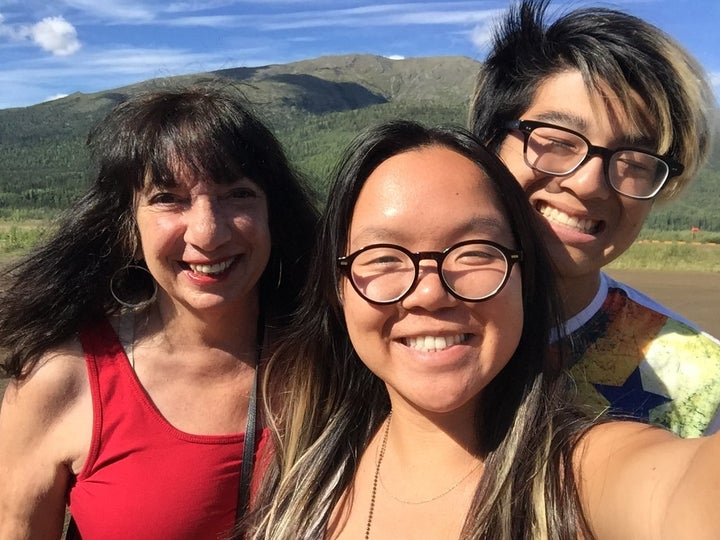
YouTube may be the world’s greatest teacher.
A family road trip in an RV through interior Alaska was at the top of my husband’s bucket list. When he died, I almost canceled it because, after all, he was the one who was going to drive the RV ― not me. FWIW, I was pretty angry at him for dying and leaving the driving to me. Yes, angry.
But given the level of intensity of our lives as his caregivers for the previous two years, well, the show simply had to go on ― even though the part where I became the driver of a 33-foot RV terrified me.
I fully credit YouTube for teaching me how to drive our rented rig. That and a prod from my buddy Charlie, who told me to buck up and put my “big girl panties on.” I respond to nothing if not a challenge.
But Charlie was right. I confronted my fears and just went for it.
The trick to overcoming fear is to not let it paralyze you. The only way to move the stuck needle is sometimes just to move it. Somehow you blindly ease your way into the intersection and trust the good nature of strangers to give you a wide berth.
I drove more than 1,500 miles along Alaskan highways and byways. I traversed narrow lanes, navigated under low tunnel overheads, and crossed rickety bridges that I would not have wanted to walk across. I even used reverse a few times, and on more than one occasion, parallel parked to the appreciation and applause of the small crowds that invariably formed while I slowly went back and forth to straighten out my many wheels.
In each of us, there is a vat of untapped courage we don’t know we have until we are tested. I probably should have realized that caregiving was a damn fine test and, along with the nation’s other 34.2 million family caregivers who have daily responsibilities for someone over 50, I had plenty of courage on hand. But should that vat run out, I’m sure there is a YouTube video telling you where to get a refill.

You really can’t go through life avoiding right turns.
Crap happens. Sometimes you get caught in the proverbial shit storm. That’s what caregiving was like for me. Just when I thought the challenges couldn’t get any harder, the tasks any nastier or any more dehumanizing, some nurse practitioner or dialysis worker would present some new and hideously unpleasant thing for me to do.
Until you’ve become a family caregiver, you just have no idea what it entails. Nothing comes easy and incrementally, things will just get worse as time goes on.
At the heart of it, family caregivers nowadays are expected to do what nurses used to do. They deal with tubes, catheters, dialysis ports and other complicated medical devices that previously required something akin to training; they change the dressings on wounds, administer injections, test vital signs and perform personal hygiene tasks for their patients. They do a whole bunch of other things that they never in a million years would have thought they would be asked to do and many of those tasks are extremely unpleasant. What unpaid family caregivers provide on an informal basis is valued at $6 billion a year, according to Rand Corp.
I don’t know a single family caregiver who hasn’t contemplated walking away from the job. But who exactly do you give your letter of resignation to?
I feel the same about making right turns in a 33-foot RV. I can’t say I enjoyed a single second of the turning experience, but I did understand that on some level, it was something I was going to have to do ― like it or not, fair or not fair.
My right turns never went smoothly and I pretty much always ran over the curb. But despite my best hope of driving for two weeks in Alaska without ever turning, right turns are a part of life. And there’s no way you can get to see Denali unless you make one.
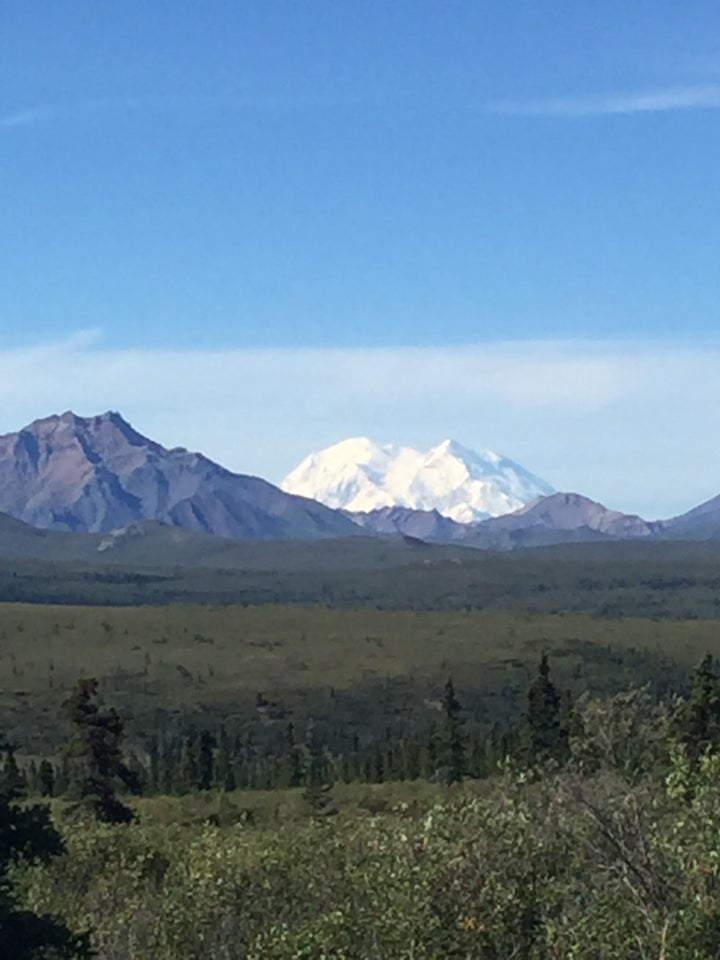
Some things just don’t turn out as you expect them to.
The Arctic Circle was one of those. Every Alaskan we met joked about how people from the Lower 48 spend a bushel of money to travel to see an imaginary line. The Arctic Circle is just that. It represents the most northerly of the abstract five major circles of latitude as shown on maps of the Earth. It’s the point of demarcation for the southern extremity of the polar day (24 hours of sunlight on the summer solstice in June) and the polar night (24 hours with no sun on the winter solstice in December.)
So yes, we traveled to see an imaginary line. It is marked by a sign, suitable for photographing yourself in front of ― which we did ― and has a few bathrooms that were unfortunately locked during our visit. Not so much as a T-shirt hawker or someone selling Arctic Circle refrigerator magnets. I liked that part.
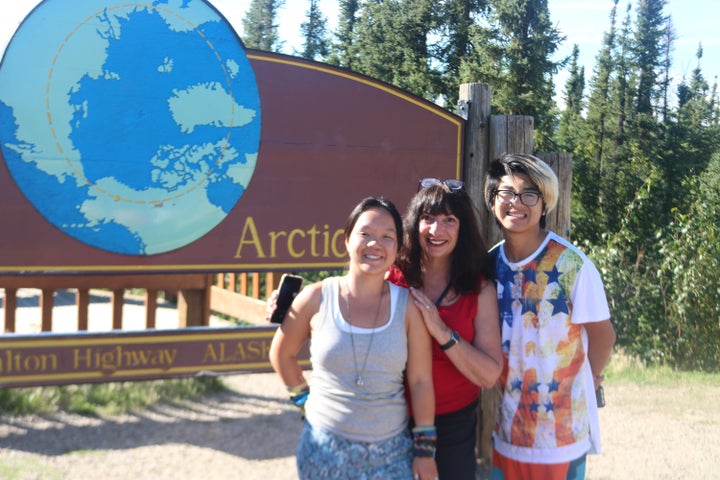
And this is what a car looks like after driving on the unpaved Dalton Highway to get to the Arctic Circle from Coldfoot. Coldfoot is an old Gold Rush town and also was used as a staging area for workers on the Alaska Pipeline. Today, it’s a truck stop and offers car washes for obvious reasons.
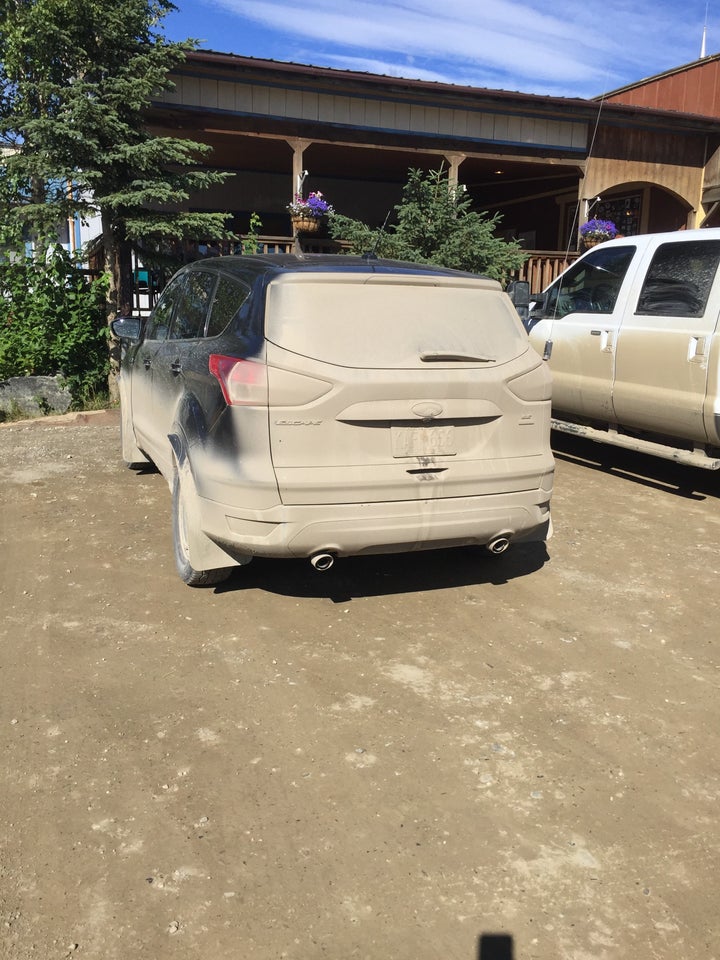
Had we known, would we still have traveled to see the imaginary line? Yeah, we probably would. Because some things just require that you see them with your own eyes ― even when there is literally nothing there to see.
Caregiving altered my view of death and dying. It also heightened my desire to live every day to its fullest, because while life may be short, a healthy life is even shorter. The Arctic Circle reminded me that the sun may not always come out, but true darkness is in the eye of the beholder. A day is still a day. Live each one fully.
Kids deserve your patience, even when your youngest keeps grabbing your food.
We were on a small boat at Crescent Lake in Alaska’s Lake Clarke National Park and Preserve, a place accessible only by float plane. As we slowly scanned the shoreline, a Mama Bear was schooling her two-year-old cub on how to fish. For his part, the cub was less interested in learning to catch his own fish and more inclined to let his mom do it for him. I have teenagers. I could totally relate.
Mama Bear set the record straight. She ate fish after fish in front of her cub, whose displeasure grew with each bite he wasn’t getting. He cried, he growled, he tried to grab the fish from her, he stomped and snorted and in a temper pique jumped on Mama from the back trying to get her to drop the fish from her mouth. Things don’t end well for lazy teenage cubs.
With the bear fight so close to our boat that I swear spittle landed on me, I grabbed my own teenage cub and his camera by the back of his belt and pulled him back farther into the boat with the command to stay put.
Caregiving for their Dad forced both my kids to assume roles and responsibilities beyond their years. They have both declined to attend any kind of grief counseling. My kids are my life. I will teach them to fish ― and to study hard and to be responsible and to be happy, good people and everything else ― and I promise that I will always give them my food if they are hungry. Alaska reminded me that I didn’t stop being Mom when I became a spousal caregiver and that I still have work to do.

Fun may seem to disappear at times in your life, but it’s really just lying in wait.
Caregiving takes its toll in many different ways. But losing the ability to have fun is a big one. Anyone who says caregiving is remotely fun is lying. And caregivers, to a person, all pretty much just live lives void of fun.
Alaska, on the other hand, is one big playground so it was pretty easy to find our fun zone again. Even the famed Alaska Pipeline was our Jungle Gym for a few hours one day.
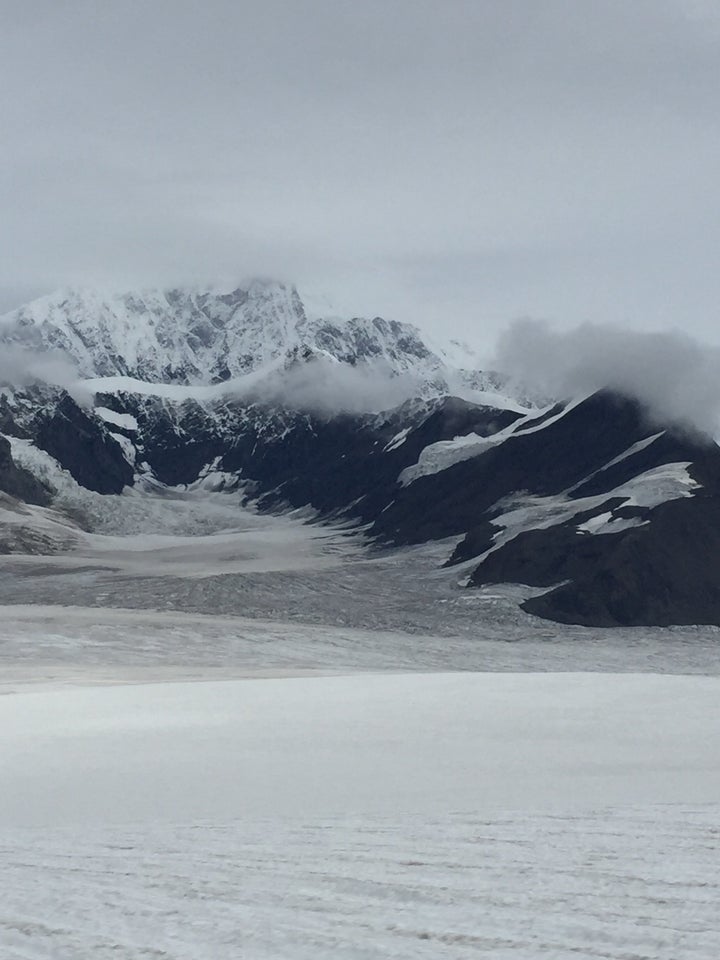
We danced on an ancient frozen glacier, visited remote wilderness areas accessible only by float and ski planes. We hiked, saw bears and Caribou, watched fish leap from pristine lake waters. We retraced the steps of gold miners and pipeline construction crews and learned how to use a CB radio to talk to truckers along the 800 miles of the unpaved and dusty Dalton Highway. We met people who live full-time in their RVs who roam the country as free souls with no clocks or calendars. We struck up conversations with drifters and grifters and wilderness addicts. We were sponges. Everyone had a story and we were eager to hear it.
The truth is, Alaska is about as good a place as any to lose yourself. And many come to Alaska to do precisely that. The raw wilderness stretches for miles and there are so many places where yours will be the only footprints for years. We took our grief to Alaska hoping to bury it there. And in the process we found our lost ability to have fun.
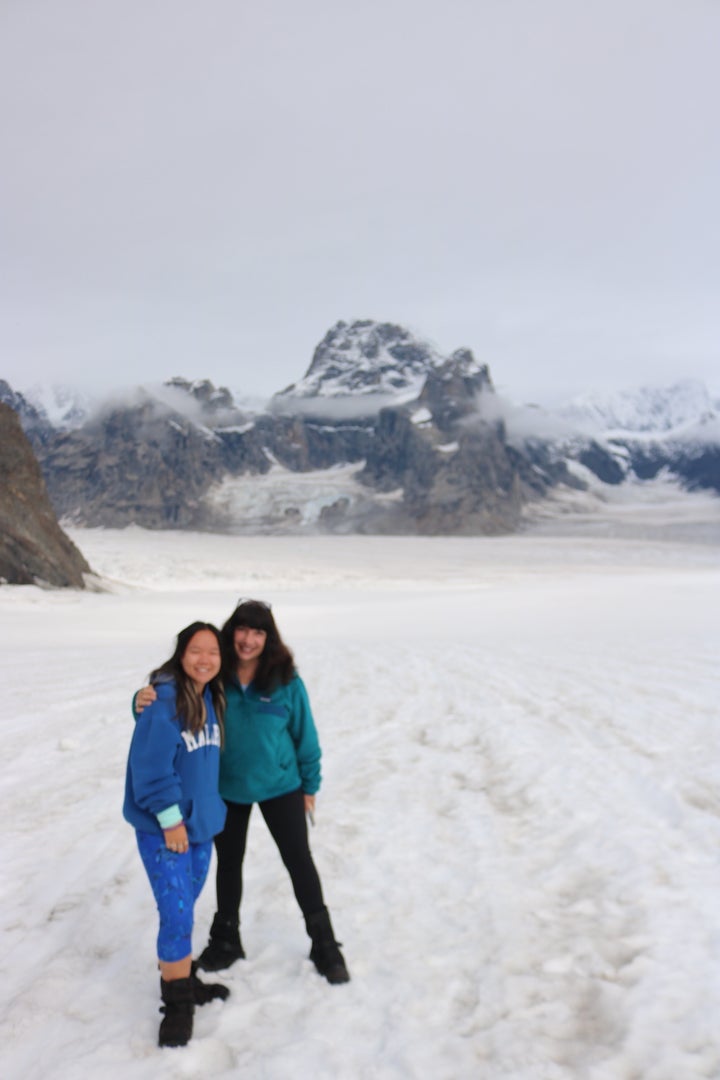
Pace yourself and cherish the silence.
There are no breaks in caregiving. It is a relentless battle against the inevitable and a daily race to keep your patient away from the finish line.
Alaska ― at least the best way to see it ― is just the opposite. It should be slow and unhurried.
Alaska is a quiet place. There are no crowds, no lines to wait in, little traffic. There is a stillness about the state that caused me, more than once, to shush my kids to lower their voices in the wilderness. The silence of Alaska nurtures the soul. I was not surprised to learn that one in every 10 Alaskans is a war veteran and the U.S. Census Bureau says Alaska has more vets per capita than any other state. I can’t think of a better place to stare down whatever ails you, whether it be war atrocities or caregiving scars.
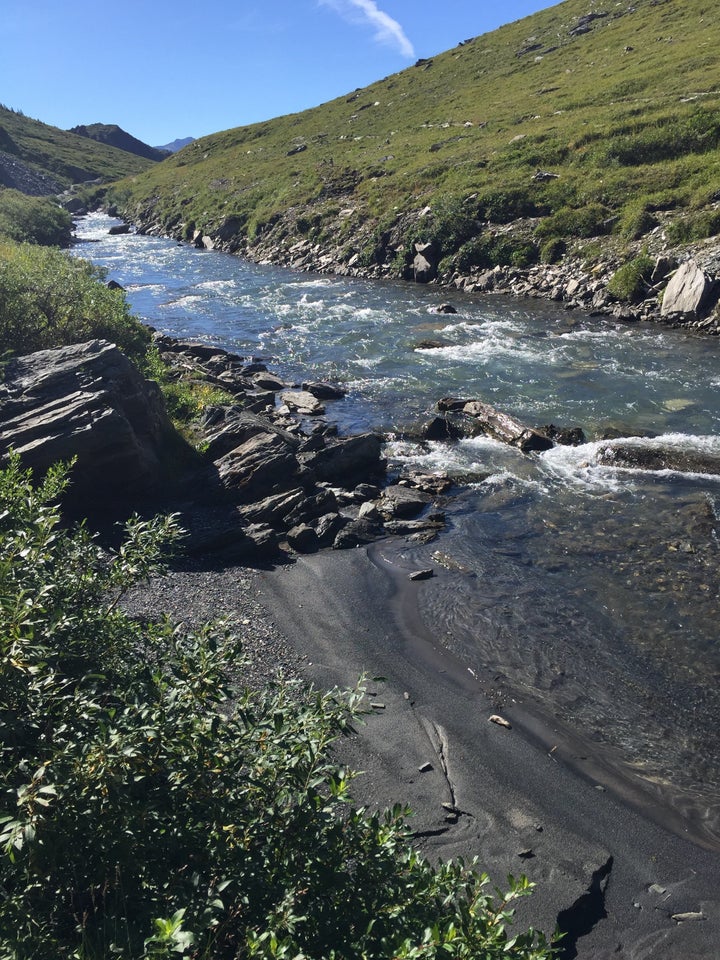
The only thing you really have control over is your ability to wait.
We proudly rushed out to buy our “30 percent club” T-shirts once the clouds parted and Denali stood in all its majesty before us. Only 30 percent of visitors actually see the mountain they’ve come to visit. When I wondered aloud if the other 70 percent of tourists went home disappointed, our free-spirited waitress ― she and her partner summer in Denali running a popular Serbian crepe restaurant, MooseAKA, and then winter on Hawaii’s Big Island selling their food from a truck ― provided this insight: “When Denali is ready, she will come to you. You can do nothing but wait for her.”
Or anything else, for that matter. Go ahead, ask me what a Serbian crepe is.